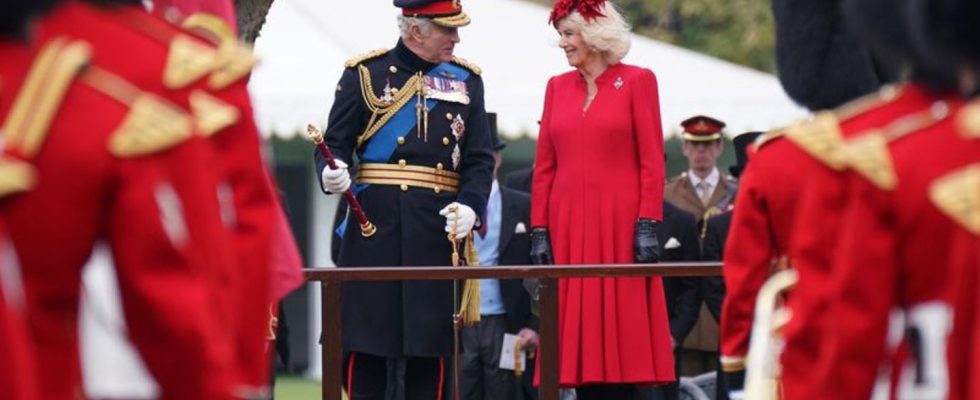Noble
Coronation Innovations: Religion, Language and Public Spheres
The British King Charles III. and King Consort Camilla during a ceremony at Buckingham Palace. photo
© Yui Mok/PA Wire/dpa
In May, King Charles III. and crowned Queen Camilla. The ceremony is said to include some new elements to reflect the “diversity of our society today”.
Significant innovations at the coronation ceremony of King Charles III. and Queen Camilla are intended to reflect the diversity of modern British society. At the ceremony on May 6 in Westminster Abbey, for the first time, representatives of other religions will play an active role in the coronation of a British monarch, as Lambeth Palace, the seat of the Archbishop of Canterbury, announced during the night.
Jewish, Hindu, Muslim, Buddhist and Sikh clerics will deliver a joint greeting to the king, and members of the religions will hand him the insignia. The move symbolizes the deep-rooted belief in promoting unity between different faiths and its commitment to interfaith dialogue, it said. British society has changed a lot since the coronation of Charles’ mother, Queen Elizabeth II, in 1953. Shortly thereafter, numerous immigrants from former colonies such as the Caribbean, Asia and Africa came to work in the United Kingdom.
“The coronation is first and foremost an act of Christian faith,” said Archbishop Justin Welby. “At the same time, the service contains new elements that reflect the diversity of our society today.” Thus, for the first time, female bishops are included.
The public is involved
Also for the first time, languages from the rest of the UK will be heard at the service as the hymn ‘Veni creator spiritus’ (Come Creator Spirit) is sung in Welsh, Scottish and Irish Gaelic in addition to English. In addition, the litany Kyrie eleison sounds in Welsh – Charles, as heir to the throne, was known as the Prince of Wales for decades and learned the language before his appointment in 1969.
For the first time, the public is to be involved, with a “tribute of the people” to the king. This replaces the traditional homage by dignitaries, where long lines of nobles kneel before the monarch and swear allegiance to him. Lambeth Palace said it hoped the significant change to the service would result in a “great cry across the nation and around the world in support of the King”.
Finally, there is one change to Camilla’s coronation. In contrast to her husband, the 75-year-old is publicly anointed with holy oil by the archbishop and, unlike previous royal wives, is not covered by a canopy. In contrast, at the anointing of Charles, a three-sided privacy screen is set up around the monarch and archbishop – it’s the only moment of the ceremony not captured by cameras.

